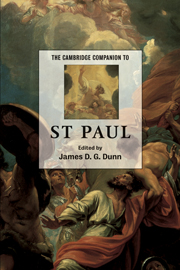Introduction
Published online by Cambridge University Press: 28 May 2006
Summary
A ‘TROUBLER OF ISRAEL’
Paul has always been an uncomfortable and controversial figure in the history of Christianity. The accusation against the prophet Elijah by Israel's King Ahab, 'you troubler of Israel' (1 Ks. 18:17), could be levelled against Paul more fittingly than any other of the first Christians. He first appears on the public stage of first-century history as a Jewish 'zealot' (Acts 22:3), one who measured his 'zeal' by his attempt to violently 'destroy' (Gal. 1:13; Phil. 3:6) the embryonic movement within Second Temple Judaism, then best characterized as 'the sect of the Nazarenes' (Acts 24:5, 14; 28:22), two generations later as 'Christianity'. Following his conversion, when he turned round and joined those whom he had persecuted (Acts 9; Gal. 1:13-16), and when he then embarked on a highly personal mission to win Gentiles to the gospel of Christ (Rom. 11:13; 15:18-20), he displayed the same sort of passionate commitment, even 'zeal' (2 Cor. 11:2) on behalf of his converts and churches.
Such out-and-out commitment to his cause created tremendous resentment among his fellow Jews, including, not least, those Jews who, like him, had also come to believe in Jesus as Israel’s Messiah. One of the chief reasons why we still have so many of his letters is that his teaching was quickly challenged by varying opponents from both within and without the churches he established; it was characteristic of Paul that he did not hesitate to respond vigorously to such challenges.
- Type
- Chapter
- Information
- The Cambridge Companion to St Paul , pp. 1 - 16Publisher: Cambridge University PressPrint publication year: 2003
- 4
- Cited by



